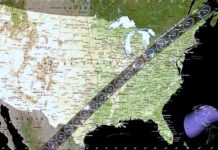WASHINGTON, Jan. 3 (UPI) — The first meteor shower of 2016, the Quadrantids, will peak Sunday night — or more accurately, early Monday morning.
Sky-watchers in North America and Europe will, weather cooperating, have an opportunity to see upwards of 80 meteors per hour. Some years, the shower can be even more prolific.
“During its peak, 60 to as many as 200 Quadrantid meteors can be seen per hour under perfect conditions,” NASA wrote in a recent blog post.
The best time to see shooting stars will be in the early morning hours just before dawn, starting around 3 a.m. local time. Meteors will streak relatively slowly across the northeastern portion of the sky, appearing to radiate from a spot halfway between the Big Dipper and Draco constellations.
The Quadrantids are called so because when first discovered in the 1830s they radiated from a constellation named Quadrans Muralis. That constellation has since disappeared — some of its stars faded, others lost to newer, more famous constellations. But the name remains.
When visible, the Quadrantids can put on one of the best shooting star shows of the year.
“Quadrantids are also known for their bright fireball meteors,” according to NASA. “Fireballs are larger explosions of light and color that can persist longer than an average meteor streak.”
But the shower remains relatively unknown compared to the Geminids, Leonids and Perseids. Those showers last a few days, while the Quadrantids peak over the course of just a few hours.
The shower is made possible by the space rubble tailing a mysterious object known as 2003 EHI. The object has been described as a minor planet, an asteroid and an extinct or rock comet. Every year, Earth’s orbit swings through the elliptical orbit of debris left behind by 2003 EHI. As the debris burns up in the atmosphere, lucky viewers on Earth enjoy a fiery display.
If weather ruins the fun, or if the predawn cold is too much to bare, the Slooh Community Observatory will be live streaming the shower from the Canary Islands.







